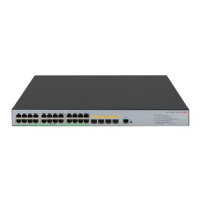7
Multicast architecture
IP multicast addresses the following questions:
• Where should the multicast source transmit information to? (Multicast addressing.)
• What receivers exist on the network? (Host registration.)
• Where is the multicast source that will provide data to the receivers? (Multicast source discovery.)
• How should information be transmitted to the receivers? (Multicast routing.)
IP multicast is an end-to-end service. The multicast architecture involves the following parts:
• Addressing mechanism—A multicast source sends information to a group of receivers through a
multicast address.
• Host registration—Receiver hosts can join and leave multicast groups dynamically. This mechanism
is the basis for management of group memberships.
• Multicast routing—A multicast distribution tree (a forwarding path tree for multicast data on the
network) is constructed for delivering multicast data from a multicast source to receivers.
• Multicast applications—A software system that supports multicast applications, such as video
conferencing, must be installed on multicast sources and receiver hosts. The TCP/IP stack must
support reception and transmission of multicast data.
Multicast addresses
Network-layer multicast addresses (multicast IP addresses) enables communication between multicast
sources and multicast group members. In addition, a technique must be available to map multicast IP
addresses to link-layer multicast MAC addresses.
IP multicast addresses
• IPv4 multicast addresses
Internet Assigned Numbers Authority (IANA) assigned the Class D address space (224.0.0.0 to
239.255.255.255) to IPv4 multicast.
Table 2 Class D IP address blocks and description
Address block Descri
tion
224.0.0.0 to 224.0.0.255
Reserved permanent group addresses. The IP address 224.0.0.0 is
reserved. Other IP addresses can be used by routing protocols and
for topology searching, protocol maintenance, and so on. Table 3
lists common permanent group addresses. A packet destined for an
address in this block will not be forwarded beyond the local subnet
regardless of the Time to Live (TTL) value in the IP header.
224.0.1.0 to 238.255.255.255
Globally scoped group addresses. This block includes the following
types of designated group addresses:
• 232.0.0.0/8—SSM group addresses.
• 233.0.0.0/8—Glop group addresses.

